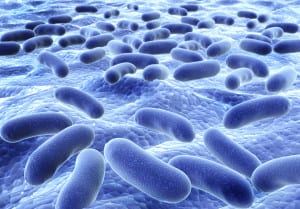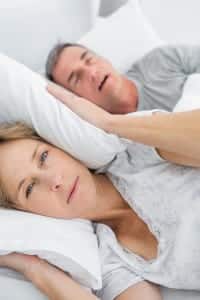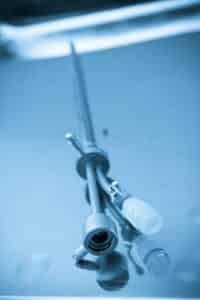How to Train Your Bladder
When we think about overactive bladder (OAB) treatments, many of us inevitably focus on the many medications that we can use to treat the symptoms of urinary urgency, frequency or urgency incontinence. Or perhaps we might even think of more advanced therapies such as botulinum toxin, sacral neuromodulation or percutaneous tibial neuromodulation. However, patients and health providers should be careful not to dismiss everyday changes that can be made without ever going to the pharmacy or visiting the doctor’s office. In fact, because behavioral changes can be so important, the current American Urological Association guidelines on OAB urge providers to offer these as first-line therapies. Even better, behavioral treatments are as effective as medications with few if any side effects. For those people who may eventually require medications or more advanced therapy, multiple studies confirm that these treatments are made more effective if combined with behavioral treatments.
 Behavioral treatments for OAB include fluid reduction, diet changes, weight loss, and pelvic floor exercises. Bladder training (BT) is another means of behavior therapy for OAB that can be effective in a properly motivated or dedicated person. BT begins with education about overactive bladder often accomplished with brochures, websites or videos. Completing a record for several days of how often one voids (and whether there is an urgency to void) helps to identify a time interval of typical urination. The goal becomes to gradually increase that interval, usually by 30 minutes every 1-2 weeks. There are numerous distraction techniques (pelvic contractions, relaxation techniques) that can be used to ignore any urinary urgency that comes in between the interval.
Behavioral treatments for OAB include fluid reduction, diet changes, weight loss, and pelvic floor exercises. Bladder training (BT) is another means of behavior therapy for OAB that can be effective in a properly motivated or dedicated person. BT begins with education about overactive bladder often accomplished with brochures, websites or videos. Completing a record for several days of how often one voids (and whether there is an urgency to void) helps to identify a time interval of typical urination. The goal becomes to gradually increase that interval, usually by 30 minutes every 1-2 weeks. There are numerous distraction techniques (pelvic contractions, relaxation techniques) that can be used to ignore any urinary urgency that comes in between the interval.
How effective is bladder training? Trials comparing BT to the most common medications used to treat OAB show that it is as effective as medications with fewer side effects. Perhaps more encouraging, other therapies including medications, are more effective if you add bladder training. So, not only can behavioral therapies be used to treat OAB on their own, but they should be continued even if you move on to other therapies.
It should be remembered that bladder training can be difficult. It requires time and attention that some people are not able to devote. The number of patients remaining adherent to bladder training tends to be low in many of these studies. We certainly could use better tools to make this therapy more successful. Yet, for the determined patient who wants a successful therapy without the cost or side effects of medication, BT can be a wonderful therapy.
Colin M. Goudelocke, M.D.

 This enlightening paper begins by pointing out that our misunderstanding of urine as sterile dates back to the 19th century when we were just beginning to grasp the nature of bacteria. This idea of a sterile bladder delayed one of the most important advancements in our treatment of patients with neurologic injuries of the bladder: self-catheterization. Prior to the 1960’s, patients with urinary retention were not told to self-catheterize out of fear that it would lead to infections. Unfortunately, the opposite is true and infections are actually prevented by catheterization in these patients.
This enlightening paper begins by pointing out that our misunderstanding of urine as sterile dates back to the 19th century when we were just beginning to grasp the nature of bacteria. This idea of a sterile bladder delayed one of the most important advancements in our treatment of patients with neurologic injuries of the bladder: self-catheterization. Prior to the 1960’s, patients with urinary retention were not told to self-catheterize out of fear that it would lead to infections. Unfortunately, the opposite is true and infections are actually prevented by catheterization in these patients. We begin by noting that many patients who get up frequently at night do so because they make too much urine at night. The bladder is simply filling up more quickly than it should. Normally for young people, no more than 20% of your daily urine production should come while you are asleep. In older patients, less than 33% is more normal. Patients who exceed this are said to have nocturnal polyuria, meaning they make too much urine at night. This is easily diagnosed by having patients keep a diary for several nights to measure how much urine they make during the night compared to the day.
We begin by noting that many patients who get up frequently at night do so because they make too much urine at night. The bladder is simply filling up more quickly than it should. Normally for young people, no more than 20% of your daily urine production should come while you are asleep. In older patients, less than 33% is more normal. Patients who exceed this are said to have nocturnal polyuria, meaning they make too much urine at night. This is easily diagnosed by having patients keep a diary for several nights to measure how much urine they make during the night compared to the day. The authors detail the history of urethral dilation beginning in a time when very little was known about normal voiding. Dilation of the urethra emerged as a treatment for numerous problems including urinary tract infections and bladder pain. The assumption was that these issues resulted from a urine tube that was too narrow to permit proper emptying of the bladder. However, it is now known that spontaneous narrowing of the urethra (urethral stenosis) is uncommon and probably represents only 1-2% of patients with voiding dysfunction. This is much less common than the frequency of urethral dilation would suggest. One concern is that repeated urethral dilation can even be the cause of narrowing of the urethra due to fibrotic healing.
The authors detail the history of urethral dilation beginning in a time when very little was known about normal voiding. Dilation of the urethra emerged as a treatment for numerous problems including urinary tract infections and bladder pain. The assumption was that these issues resulted from a urine tube that was too narrow to permit proper emptying of the bladder. However, it is now known that spontaneous narrowing of the urethra (urethral stenosis) is uncommon and probably represents only 1-2% of patients with voiding dysfunction. This is much less common than the frequency of urethral dilation would suggest. One concern is that repeated urethral dilation can even be the cause of narrowing of the urethra due to fibrotic healing. A recent review article by
A recent review article by  A recent review article by
A recent review article by 
